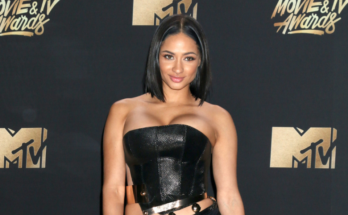When we talk about the queens of the 1980s, names like Madonna, Whitney Houston, and Cyndi Lauper immediately spring to mind. They ruled the airwaves and the fashion world. But there was another “queen”—a self-crowned, platinum-blonde enigma whose influence was less about record sales and more about a seismic shift in culture: the rise of self-made, relentless celebrity. Her name, often stylized as ANGELENA by fans, is truly Angelyne, and she is undeniably the original “Billboard Queen” and the spirit animal of 80s Los Angeles.
Her reign didn’t start on MTV or through a major label contract; it began on a massive billboard overlooking Sunset Boulevard in 1984.
The Birth of an Icon: How to Be Famous Without Doing Anything
In a decade defined by excess, materialism, and the philosophy that “more is more,” Angelyne found a truly unique—and costly—way to capture the zeitgeist. Before social media, before reality TV, and before the term “influencer” existed, Angelyne harnessed the power of outdoor advertising.
Starting in February 1984, giant pink-and-white images of Angelyne, often posing suggestively, began popping up all over Los Angeles. The message was minimal, usually just her name in a stylized font, or phrases like “Angelyne Rocks.” This was a radical concept: fame for the sake of fame. She wasn’t promoting an album (though she had released one, Angelyne, in 1982) or a film; she was promoting herself as a product. The sheer audacity of the campaign fascinated the media and captivated the public. Who was this woman? Where did the money come from? And what exactly was she famous for?
This calculated mystique became her currency. By concealing her real name, age, and background, she became a blank slate onto which the city could project its fantasies of glamour and ambition. The billboards—eventually numbering over 200 across the city—turned Angelyne into a geographical landmark and a living piece of pop art, defining the visual landscape of Los Angeles for decades to come.
Fashion: The Epitome of 80s Power and Glamour
Angelyne’s aesthetic perfectly channeled the over-the-top, unabashed glamour of the 1980s. Her signature look was instantly recognizable, a masterpiece of exaggeration and deliberate femininity:
- The Platinum Mane: Huge, backcombed, often messy platinum blonde hair that defied gravity and convention. It screamed Dynasty and excess.
- Body-Con Glamour: She was known for figure-hugging, often low-cut or cropped clothing, emphasizing the body-conscious trend popularized by Lycra and stretchy fabrics of the era.
- The Pink Corvette: The ultimate accessory. Her custom-painted pink Corvette, which she famously drove all over town, served as her mobile throne. It was the physical embodiment of 80s flash—bold, customized, and impossible to ignore.
Her entire persona was a hyper-real, cartoonishly glamorous take on the aspirational LA woman. She was a walking, driving performance art piece who merged the “aerobics craze” tight silhouettes with the “power dressing” sense of undeniable presence, proving that in the 80s, visibility was victory.
From Billboard to Breakthrough: The Media’s Darling
While her primary medium was outdoor advertising, her fame seeped into every corner of the decade’s pop culture. Angelyne was less a musician and more a multimedia curiosity.
She released her second album, Driven to Fantasy, in 1986, which featured a new wave and dance-pop sound typical of the decade. More importantly, she became a guaranteed visual gag or cultural shorthand in Hollywood productions. Her actual billboards were featured prominently in the opening credits of the TV show Moonlighting (1985), and she secured cameo roles in various films, most notably the cult classic Earth Girls Are Easy (1988), starring Geena Davis and Jeff Goldblum. These appearances cemented her status as a genuine Hollywood figure, albeit one whose fame was derived from a brilliant piece of meta-marketing.
The Enduring Legacy of Self-Branding
Angelyne’s greatest influence is perhaps the least recognized: she democratized fame. She showed that you didn’t need pedigree, talent, or corporate backing to become a household name; you just needed self-belief and a lot of advertising cash.
In an era when celebrities were curated and packaged, Angelyne was a completely self-made brand, a fiercely independent entrepreneur whose “product” was the very idea of a California dream girl. She is the proto-influencer, the foremother of reality stars, and the definitive statement on the power of image over substance that characterized the late 20th century. Her ability to sustain her persona well into the 21st century—still selling merchandise out of her pink Corvette—only underscores the timeless success of her 1980s strategy.
Angelyne didn’t just participate in the 80s; she distilled its spirit into pure, glorious, and unmistakable pink visibility. She remains the mysterious, glittering, and iconic Queen of the 80s, still rocking, still rolling, and still driving her fantasy down Sunset.



